|
Selective Breeding |
|
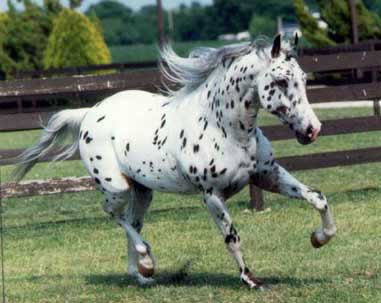
Using the observation that offspring possess similar traits to their parents, humans have chosen to breed specific plants and animals in order to produce offspring with desirable physical features and behavior.
For example: The native tribe the Nez Perce became quite famous for their selective breeding of horses. The Nez Perce selected only the strongest horses for breeding which resulted in the breed known today as the Appaloosa. The Appaloosa continues to be admired for its good nature, speed, and stamina.
|
| |
|
Dominant |
|
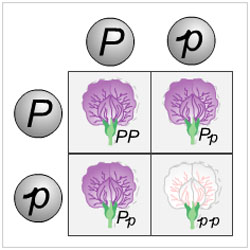
A dominant trait will always express itself in an organism whether it is partnered with a different (recessive) trait or with another dominant partner.
For example: The tallness trait in peas can be recognized as "A" which is dominant and the recessive shortness can be recognized as "a" "AA" will result in a tall pea as will "Aa"
|
| |
|
Recessive |
|
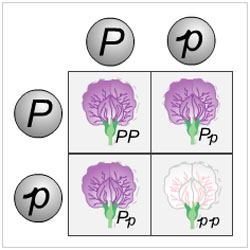
A recessive trait will not express itself if partnered with a dominant trait, however, if partnered with another recessive trait-it will appear in the organism.
For example: The tallness trait in peas can be recognized as "A" and the shortness can be recognized as "a""Aa" will result in a tall pea, but "aa" will result in a short pea.
|
| |
|
Complete Dominance |
|
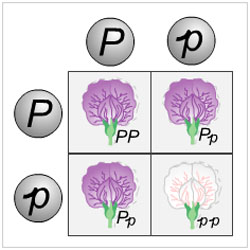
The fact that a dominant allele (different forms of the same gene) will always express itself over a recessive allele. An organism possessing one recessive and one dominant allele will have the same physical characteristics as an organism with two dominant alleles.
For example: A pea possessing one dominant tallness trait and one recessive shortness trait would become a tall pea, just the same as it would if it had two dominant tallness traits.
|
| |
|
Law of Segregation |
|
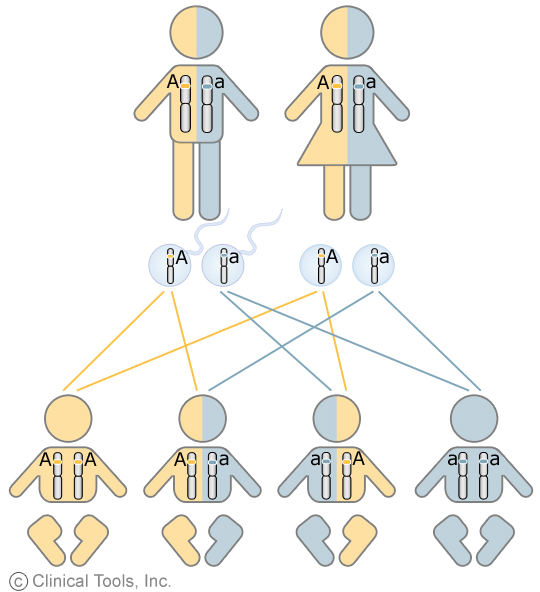
The Law of Segregation was Mendal's first law of inheritance. It stated that all individual organisms possessed two copies of each gene factor and that these factors "segregate" randomly during the formation of gametes. Finally, after the separation of these factors, each gamete receives one copy of each gene.
|
| |
|
Genotype |
|
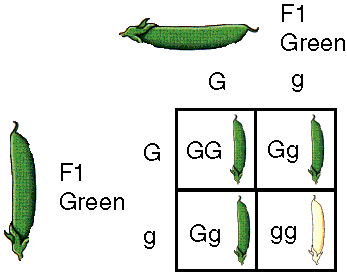
A Genotype is the combination of alleles that produced any given trait.
For example: According to Mendal's system the allele for wrinkled seeds is referred to as "r" and the allele for round seeds is referred to as "R"Each pea plant could potentially possess the GENOTYPES "RR" "Rr" or "rr"
|
| |
|
Phenotype |
|
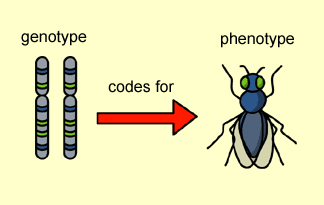
The Phenotype is the outward observable expression of the trait that is created by an organisms Genotype.
For example: According to Mendals system of "R" referring to round seeds and "r" referring to wrinkled seeds, the production the Genotype "RR" would result in the PHENOTYPE of round seeds.
|
| |
|
Homozygous |
|
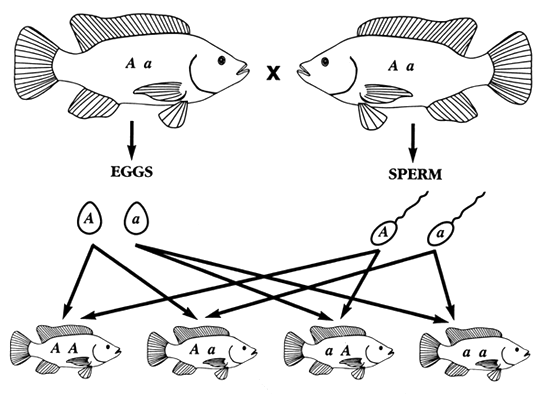
Homozygous is the term used to describe an individual that possesses a genotype consisting of two identical alleles
For example: "RR" or "rr"
|
| |
|
Heterozygous |
|
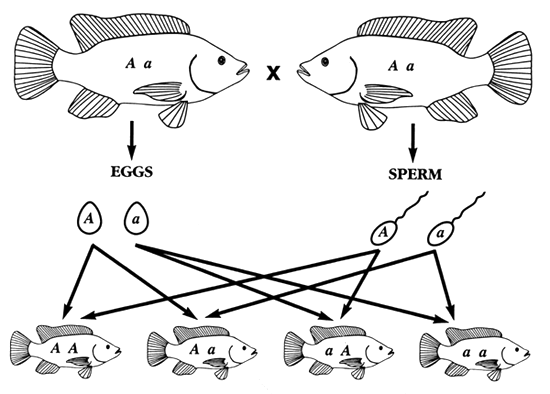
Heterozygous is the term used to describe an individual that possesses a genotype consisting of two different alleles
For example: "Rr"
|
| |
|
Punnet Square |
|
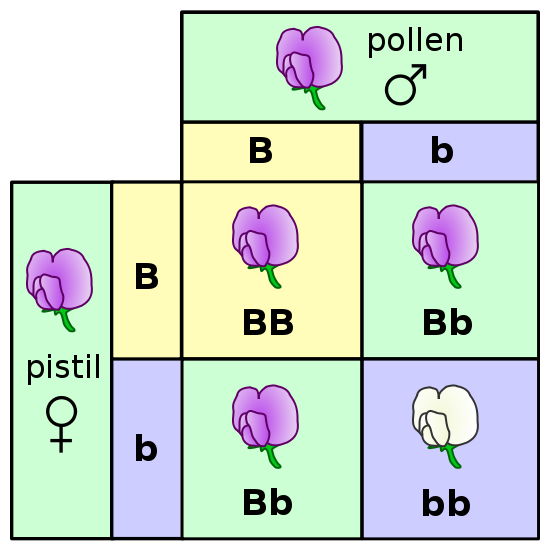
A Punnet Square is a fairly simply table developed by British geneticist Reginald Punnet. The Punnet Square is used to clearly show all possible combinations of alleles.
|
| |
|
Test Cross |
|
A test cross is a test done by geneticists to find out if an organisms phenotype is heterozygous or homozygous. A test cross is done between an organism with an unknown genotype and homozygous recessive organism, and the offspring is further studied.
For example: The condition "waltzer" is a recessive condition that interferes with balance in mice. In order to test mice who appear normal but may possess a recessive gene for the defect, geneticists would do a test cross. If the mouse being tested was heterozygous, half of its offspring would have the waltzer condition.
|
| |
|
Dihybrid Cross |
|
A Dihybrid Cross is the breeding or "crossing" of two individuals that possess two different traits.
For example: Mendal crossed homozygous tall green plants (TTGG) with homozygous short yellow plants (ttgg) resulting in offspring that were heterozygous for both traits (TtGg)
|
| |
|
Incomplete Dominance |
|
Incomplete Dominance is used to describe the occurrence in which neither of the two alleles for the same gene can completely conceal the other.
For example: A flower known as the "four o'clock plant is a cross between a true-breeding red flower and a true-breeding white flower which produces a pink flower. |
| |
|
True Breeding |
|
A True Breeding organism is one that possesses homozygous traits and thus produces further homozygous organisms. |
| |
